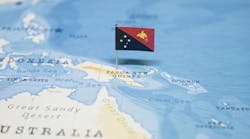Maureen Lorenzetti
The latest US government and private energy forecasts predict residential natural gas customers will pay more to heat their homes this winter. It's still unclear whether those prices will reach the "crisis" proportions some politicians were counting on. But lawmakers and White House officials alike assume the worst will still happen, with studies, reports, task forces, and press conferences pointing blame and offering solutions.
NPC and GOP
The National Petroleum Council Sept. 25 will release an update to a 1999 report on the 21st Century natural gas market. The same week an 18-member House Republicans panel will unveil its own recommendations for "affordable natural gas." Both the NPC study and the panel's report are expected to be similar in tone; they will likely be considered in Capitol Hill discussions now under way for comprehensive energy legislation and annual spending bills. Industry lobbyists, for example, anticipate both documents will ask the White House to continue efforts to streamline public land permitting. Congress, in turn will be urged to pass expanded tax incentives for domestic oil and gas production and reconsider some drilling restrictions.
"We've been talking about this bill for a long time; there aren't many ideas we haven't seen already," said a Republican Senate energy committee aide earlier this month.
Price outlook
In its latest short-term forecast, the Department of Energy's independent statistical arm, the Energy Information Administration, said residential natural gas prices for this heating season are expected to be about 10-15% higher than average prices seen last winter. The biggest price jump will likely occur in the fourth quarter, when wellhead prices are projected to be about $1/Mcf, 32% higher than 1 year earlier.
Assuming normal weather, spot prices of $4.80-5.50/MMbtu are expected for the rest of this year, EIA said. Natural gas demand growth is expected to be flat this year due to demand weakness in the industrial sector and sharply lower weather-related demand from the electric power sector during the summer months. In 2004, demand is projected to remain flat as increases in industrial and commercial sector demand are canceled out by lower electric power sector demand, EIA said.
According to a Sept. 8 forecast by Adam Sieminski, energy analyst with the London office of Deutsche Bank AG, the US gas price is now on track to average "an unprecedented" $5/MMbtu for 2003. "Natural gas, and particularly LNG, has never had such a high public profile, driven by the US gas crisis," Sieminski said.
He said both US and Western Europe markets are "fundamentally bullish" given the long-term theme of deteriorating production and rising demand.
But he cautioned the picture could change given production and imports are rising in response to price signals, and industrial and electricity generation gas demand has weakened.
Sieminski expects US gas prices to hold at $4.50-4.25 over the winter. For 2004, the bank's annual forecast went to $4/MMbtu from $3.50/MMbtu, with prices expected to settle at $3.50/MMbtu in 2005.
(Author's email: [email protected])
